 Back
Back

Papaya is a popular fruit famous for its high nutritive and medicinal values. It comes earlier in bearing than any other fruit crop, produces fruits in less than a year and the production of fruits is quite high per unit area.
Soil and climate
Soil and climate

It is a tropical fruit and grows well in regions where summer temperature ranges from 35°C - 38°C. Tolerates frost and comes up to an elevation of 1200 m above mean sea level. Well drained soils of uniform texture are highly preferable to avoid collar rot disease.


Planting and Season:- Papaya can be cultivated in below seasons In India.
➥ Spring season (February – March)
➥ Monsoon season (June-July)
➥ Autumn season (October-November)
Papaya Varieties & Propagation
Papaya Varieties & Propagation
The best varieties under cultivation are Taiwan 786, Pusa nanha, 15 number, Red chili, Green berry, Ice berry, Raspberry, Meriwala. Commercially the papaya is propagated by seeds. The tissue culture technique is limited to research laboratories only. The seeds lose viability in a short period and therefore the seeds should not be stored for more than a season.
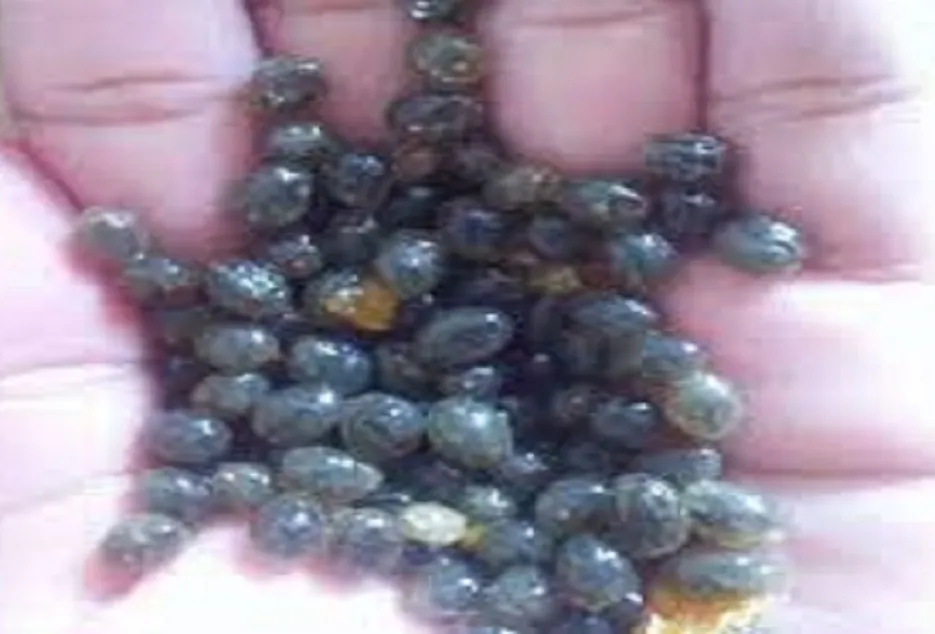

Spacing
Spacing
A spacing of 1.8 x 1.8 m. is normally followed. However higher density cultivation with spacing of 1.5 x 1.5 m./ha enhances the returns to the farmer and is recommended.


Special Horticultural practices
Special Horticultural practices
Initially planting can be done with 3 to 4 seedlings at one place and while removing extra plants and keep one plant per pit while doing so 10 percent male plants are kept in female plant population to have pollination and to improve the fruit.


Interculturing
Interculturing
This operation is mainly done to remove the weeds during the early period of growth, weeding and hoeing in between rows also favour better aeration to root zone. Some times pre-emerging weed killer can also be used.


Flowering
Flowering
Papaya plants or trees may be categorized to male, female or hermaphrodite trees based on type of flowers they produce.The tree’s type or gender, the flowers and fruit (if found) vary in appearance, function and size. Typically Papaya plants gender may change depending on the temperature during the developmental stages.


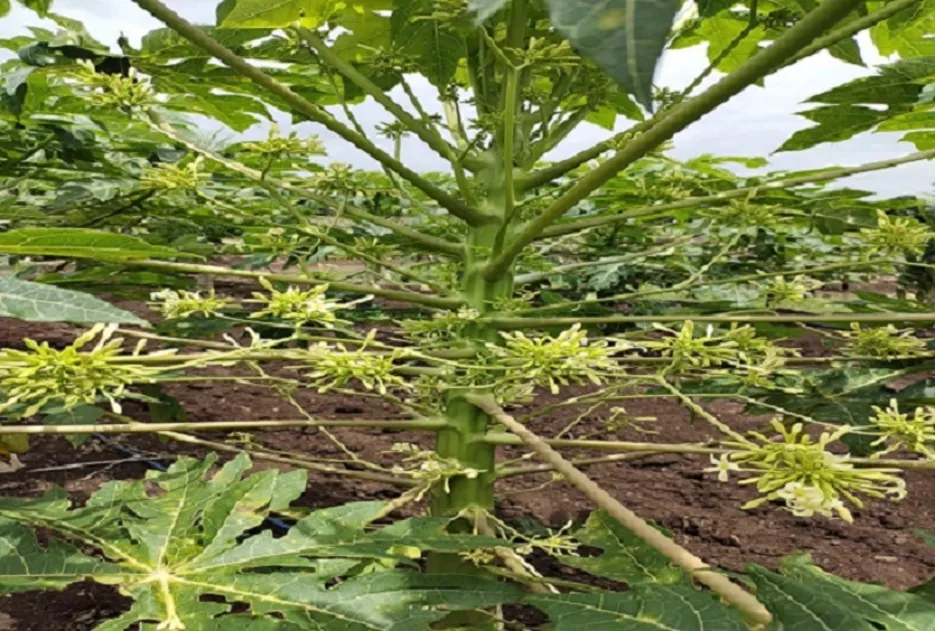
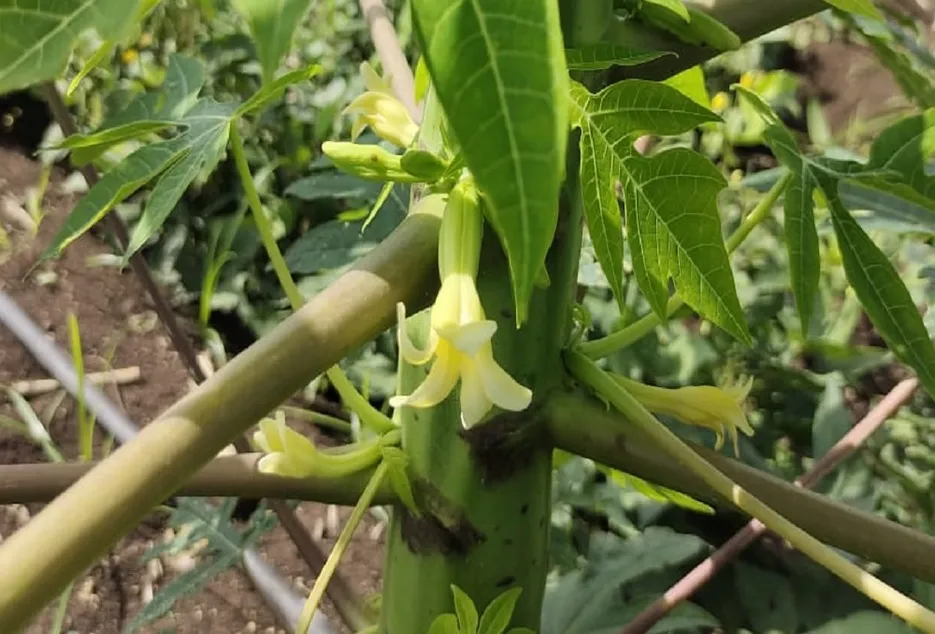
Irrigation
Irrigation
For better growth, production and quality, the optimum soil moisture is maintained by irrigating the crop judiciously. Irrigation interval well depend on season, crop growth and soil type. In no case, water should be allowed to stagnate causing root and stem rot. Drip system of irrigation is beneficial and the actual quantity of water to be given per plant per day should be worked out critically.


Application of manures and fertilizers
Application of manures and fertilizers
The dose of NPK at the rate of 200 kg each per acre, along with 8-10 tones of FYM 20 to 40 kg of micronutrients and seaweed extract granules.
Insect Pests & Disease
Insect Pests & Disease
Mite
Mite
Mites suck the sap of the leaves and yellowish spots appear, on the dorsal side of the infested leaves which finally dry up and fall off prematurely.

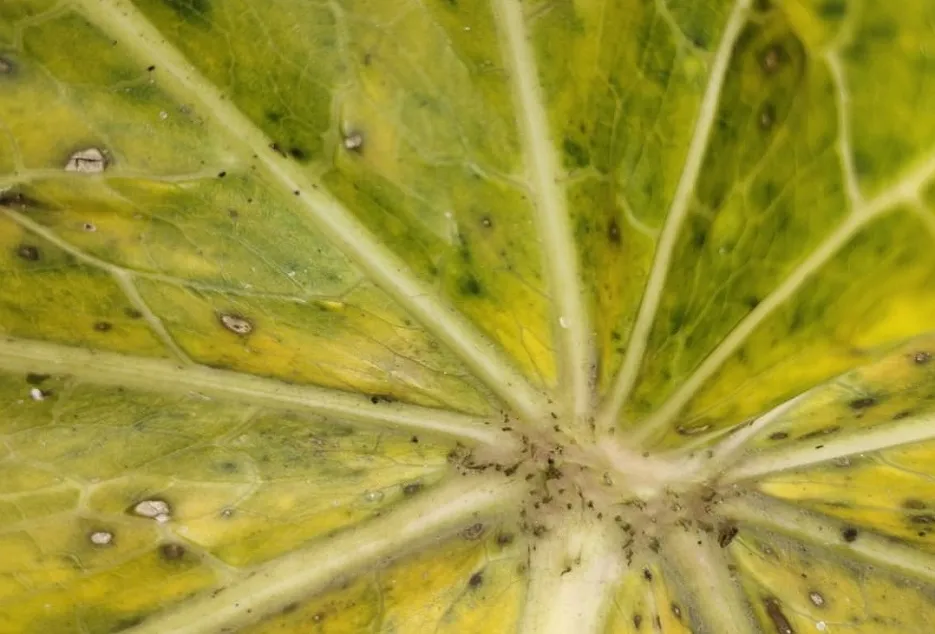
Mealybug
Mealybug
Mealybugs feed by inserting long sucking mouthparts styles into plants and drawing sap out of the tissue. Higher rate of infestations causes more damage and plant growth is reduced and fruit quality will poor.


Whiteflies
Whiteflies
Whiteflies are a common pest of papaya and are destructive/active during the dry season. They suck the cell sap and are seen clustering between the veins on the ventral surface of the leaves. The leaves become yellowish, wrinkle, and curl downwards. They also act as vectors in transmitting the virus.


Damping-off
Damping-off
Damping-off disease is caused by infections and as well as more moisture and less moisture. More moisture also supports fungal and other pathogens. Both pre-emergent and post-emergent symptoms are common.


Papaya Leaf Spot
Papaya Leaf Spot
Leaf spot disease is common among fungal infections. The disease is more severe in cooler temperatures and rainy months. The leaf spots are more common on older leaves and leaves turn yellow, untidy and flower dropping is observed on the respective petioles of the infected leaves.
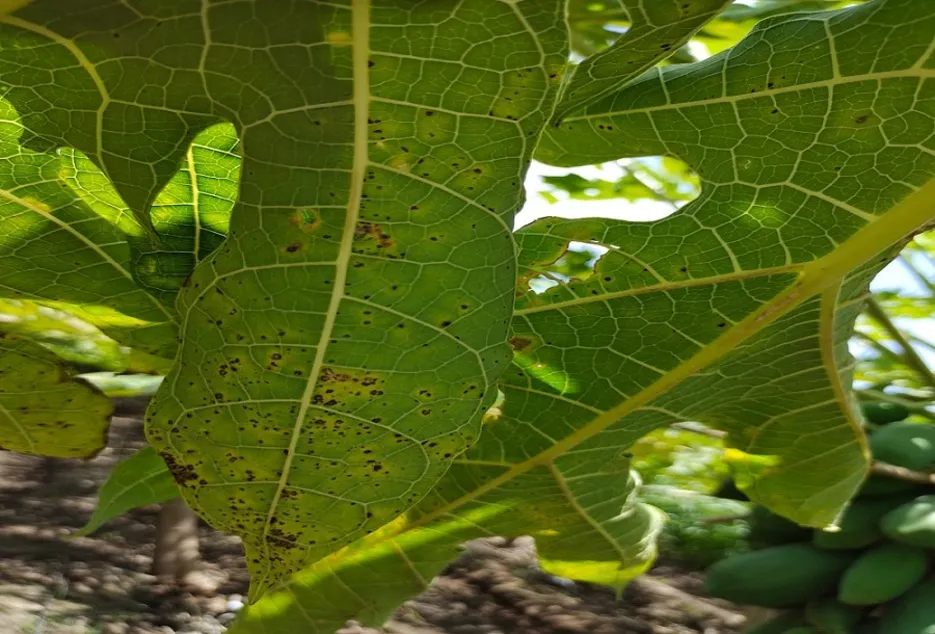

Papaya ring Spot
Papaya ring Spot
Top leaves begin to have yellow mosaic in the leaf blade and green oily streaks appear on the stem and petiole of younger leaves. These ring spots appear on flowers and fruits. Can cause production loss between 5-100% depending on the age in which the plant is affected. The disease is said to be transmitted from plant to plant by aphids.




Papaya leaf curl
Papaya leaf curl
It’s causal organism is tobacco leaf curl virus. The leaves are severely affected and show symptoms of curling, crinkling, and distortion of leaves accompanied by vein clearing and reduction in leaf size.The affected plants either do not flower or bear a few fruits only.
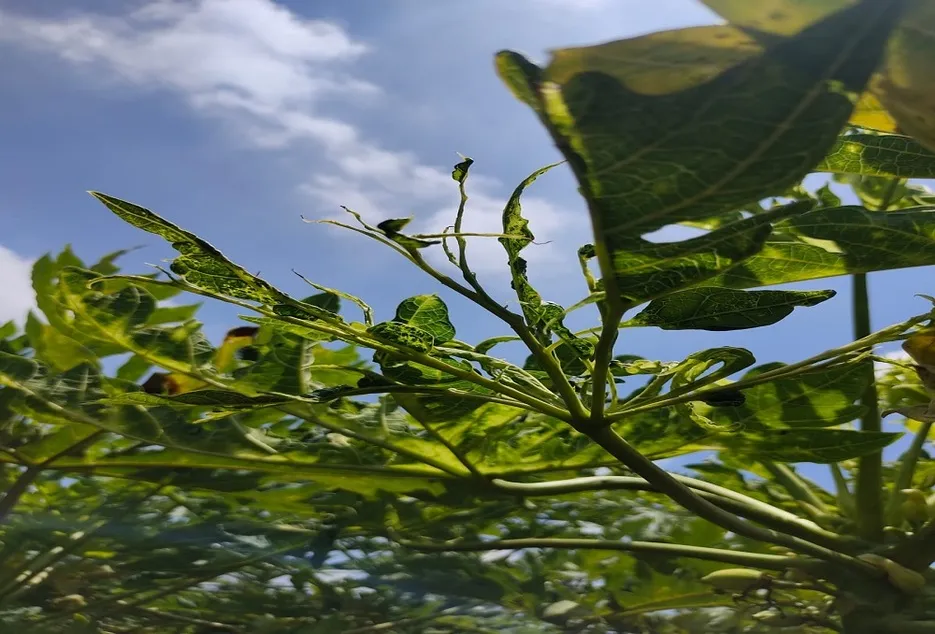

Tip :- Control insect and disease use recommended insecticides and fungicides. For control Powdery Mildew use Roko Thiophanate Methyl 70%WP.
Tip :- Control insect and disease use recommended insecticides and fungicides. For control Powdery Mildew use Roko Thiophanate Methyl 70%WP.
Harvesting & Yield
Harvesting & Yield
Harvesting generally starts 9 to 10 months after sowing. Mature fruits are harvested when they show streaks of yellow coloration. Since papaya trees are not very tall, handpicking is employed. Yield in papaya varies from about 25 kg/plant in some varieties like 75 - 100 kg/plant.


Thank you for reading this article, we hope you clicked on the ♡ icon to like the article and also do share it with your friends and family now!








